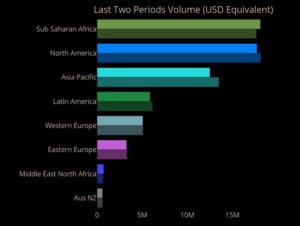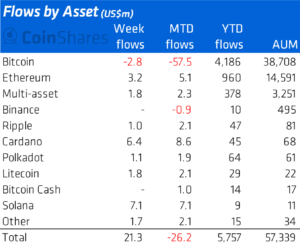The oil and gas (O&G) industry has a history of boom and bust, and 2020 was no different. With a dramatic decrease in demand brought on by COVID-induced shutdowns, the industry began laying off employees and consolidating. While challenges are not new to O&G companies, they found themselves having to adapt with even greater speed and agility to address the current landscape and prepare for a new market reality.
Dave Turner is the IBM Global Industry Leader for Oil and Gas for Asset Management. He thrives on working closely with system architects, designers and product managers to ensure IBM provides the absolute best solutions for asset management. We recently sat down with him to find out how O&G companies are doing: how they’re faring under a new economic reality of a supply/demand imbalance and how they’re itching to get back into the field and get their hands on the equipment again.
Q: Your customers have had a challenging year. How have they handled this; what were the impacts?
The oil and gas industry was already under pressure when pandemic hit. OPEC production actually increased during the first part of 2020 while oil consumption decreased by almost 30 million barrels per day in response to the shutdowns. Because of this, oil prices bottomed out and then actually went negative for a while – we were running out of places to store oil.
 Twenty years ago, when there was a downturn in the market, O&G companies used the money they saved to invest in new equipment and business infrastructure. That did not happen this time. Instead, the impact was catastrophic, and many companies faced massive layoffs. In fact, some of equipment upgrade programs were shut down — and there have been some bankruptcies, mergers and acquisitions. There’s also been a lot of consolidation but that happens with every downturn in the market
Twenty years ago, when there was a downturn in the market, O&G companies used the money they saved to invest in new equipment and business infrastructure. That did not happen this time. Instead, the impact was catastrophic, and many companies faced massive layoffs. In fact, some of equipment upgrade programs were shut down — and there have been some bankruptcies, mergers and acquisitions. There’s also been a lot of consolidation but that happens with every downturn in the market
One thing that didn’t change — and what these companies will continue to do — is keep a focus on safety in the workplace. The oil and gas industry has always made safety part of their culture. First thing you do at the start of the day or a meeting is to have a safety moment. Now COVID is part of the safety moment. For example, if you’re flying workers out to an oil rig, they must be tested before they fly out. You can’t bring sick people into a closed environment
Q: What technology have these oil and gas companies used to overcome these challenges?
Well, as I said, the industry has not invested much money on new technology yet. In Houston, for example, employees in the corporate offices and the IT teams, they haven’t gone back to their buildings yet. They’re spending this timeout researching technology with Industry 4.0 and digital twins. But they’re not necessarily making purchase decisions yet. I think they’ll ramp up slowly. They’re wary, cautious. They’ve seen downturns before, but this one has been epic.
Q: What’s exciting to you in the coming years or, rather, what excites your customers?
 Customers focus a lot on IBM Maximo Manage, our Enterprise Asset Management solution, which is the business of maintenance. It’s the everyday work of prioritizing and executing your maintenance backlog.
Customers focus a lot on IBM Maximo Manage, our Enterprise Asset Management solution, which is the business of maintenance. It’s the everyday work of prioritizing and executing your maintenance backlog.
For O&G, we also focus on supporting the integration of HSE (health, safety, and environmental) capabilities, along with operations and maintenance, and bringing those three together.
For example, you have a safety briefing before you start a job. Like when a welder goes to strike an arc to make a repair. He likely needs a gas-free permit for the area where he’s working. So why wouldn’t you want to have the permit capability in the Maximo application? That permit needs approval from the people who actually go out and test the air and make sure there’s not an explosive environment for that welder. Those tasks should be managed in the same software that manages the work order for the welding. Tying the safety preparations to the work planning and scheduling just makes sense.
Alternatively, if there’s an incident, then tying the incident report, resultant investigation and any operational or design changes to the work order can help everyone see and understand what happened. Again, we’re tying safety process support to work management.
Finally, a work order can be related to an operational trigger, such as a temperature or pressure trend that prompted the work order. That’s something you need to know.
So, they’re not integrating their OT and IT data because they sit in different silos, is that right?
Yes, the OT data sits in a different silo from the IT data, and there’s security trepidation. Operational technologies are in closed systems and the minute you start bringing that into your IT systems where all your business information is, you’re opening a door. There are security protocols for that, but companies don’t just jump in. Oil and gas companies are interested in leading-edge technology, but not necessarily bleeding-edge technologies. That’s why they look to partner with a company that has a solid focus on security and can help them strategize and consider all the angles.
Do oil and gas companies need similar IT security as FinTech organizations?
Yes, although it’s not quite as critical as a utility, for example. But anywhere where the operational technology is also the control system — not just monitoring, but the control system — they want that to be a closed system for all the obvious reasons. You don’t want somebody hacking in and shutting down an oil platform or turning a remote operated valve the wrong way. Not a week goes by that there isn’t some kind of security event somewhere.
Q: What’s the best piece of advice for a client looking at digital transformation?
z Learn from what other industries are doing. There’s nothing unique from a maintenance perspective. But every company thinks, “We’re the only ones that do it this way.” And it’s not just the oil and gas industry; every industry thinks that nobody else operates a plant like they do. But it’s not true.
Learn from what other industries are doing. There’s nothing unique from a maintenance perspective. But every company thinks, “We’re the only ones that do it this way.” And it’s not just the oil and gas industry; every industry thinks that nobody else operates a plant like they do. But it’s not true.
You can learn from what other industries are doing and the smart players do that. If an oil and gas producer sees Toyota, for instance, coming up with a new method or a new technology to improve their efficiency and reduce their plant downtime, the smart ones look into that. You should not restrict your scope to just your industry — pay attention to what the other industries are doing. The aviation industry and, of course, the space programs — plural — are famous for their attention to safety and maintenance excellence. For example, United Airlines was one of the first organizations to get serious about reliability-centered maintenance. Now it is a commonly accepted methodology for maintenance management across all industries
Q: Lastly, what’s the one thing you’re hearing from customers now?

I think the customers are anxious to get back to working in person with colleagues and re-involved with the professional societies to help them do some of these things. We’re starting to see anticipation for trade conferences and shows where you can really learn so much more from seeing, doing and discussing options in person. The real learning happens at the booth, in the case of trade shows, or in meeting rooms, or at dinners after a tradeshow where you can get into more of the details and really incorporate what you might have learned.
There are customers that have been cleared for travel. One of my favorite customers, a reliability manager for a worldwide company, can’t fly yet. But he can start driving to some of his plants. He can start doing instead of just talking and can see if his teams — the people that he’s guiding along a reliability maturity curve — fully understand what they’ve been working on remotely. Working together in person always yields better understanding and better performance.
More resources for oil and gas professionals
- Explore how IBM is helping oil and gas (O&G) companies to accelerate energy transitions.
- See how IBM Maximo can improve your O&G asset management strategy in the field, on the platform and at the pipeline.
- Read the IDC Snapshot on how the industry has shifted from safety challenged and labor intensive to a more resilient structure using automation and AI.
- See how the Hub Power Company proved that efficient health, safety and environment practices start with IT.
Source: https://www.ibm.com/blogs/internet-of-things/an-oil-and-gas-industry-conversation/
- 2020
- Absolute
- acquisitions
- advice
- AI
- Airlines
- All
- Application
- AREA
- asset
- asset management
- Automation
- aviation
- BEST
- boom
- Briefing
- business
- bust
- change
- closed
- coming
- Companies
- company
- conferences
- consolidation
- consumption
- continue
- Conversation
- Covid
- Culture
- Current
- curve
- Customers
- data
- day
- Demand
- Design
- DID
- digital
- Digital Transformation
- Digital twins
- downtime
- driving
- Economic
- efficiency
- employees
- energy
- engineer
- Enterprise
- Environment
- environmental
- equipment
- Event
- fintech
- First
- Focus
- GAS
- Global
- hacking
- Health
- history
- How
- HTTPS
- IBM
- Impact
- industries
- industry
- industry Leader
- information
- Infrastructure
- integration
- investigation
- IT
- it security
- Job
- jump
- labor
- layoffs
- LEARN
- learned
- learning
- Making
- management
- Market
- million
- money
- monitoring
- New Market
- Oil
- Oil and Gas
- operating
- Operations
- Options
- order
- Other
- pandemic
- partner
- Pay
- People
- performance
- perspective
- planning
- plants
- platform
- power
- pressure
- producer
- Product
- Production
- Programs
- purchase
- Ramp
- Reality
- reasons
- reduce
- report
- Resources
- response
- rig
- Rooms
- running
- Safety
- security
- sees
- sense
- smart
- So
- Software
- Solutions
- Space
- speed
- Spending
- start
- store
- support
- system
- Systems
- talking
- Technologies
- Technology
- test
- time
- toyota
- trade
- Transformation
- travel
- United
- united airlines
- utility
- valve
- week
- WHO
- woman
- Work
- workers
- Workplace
- world
- worldwide
- year
- years





